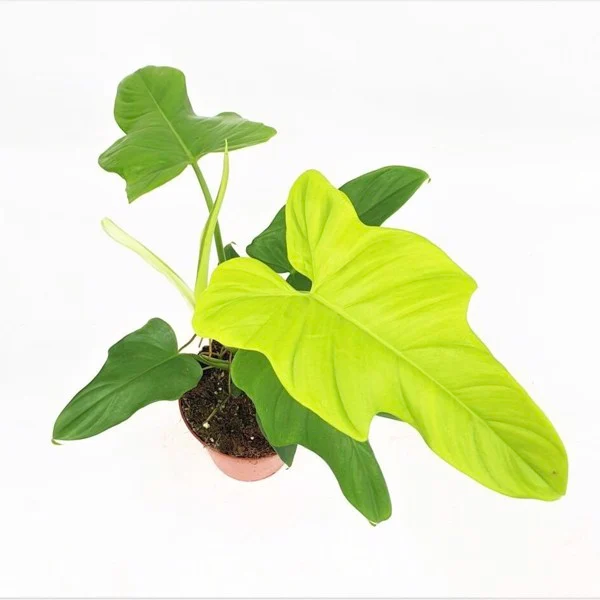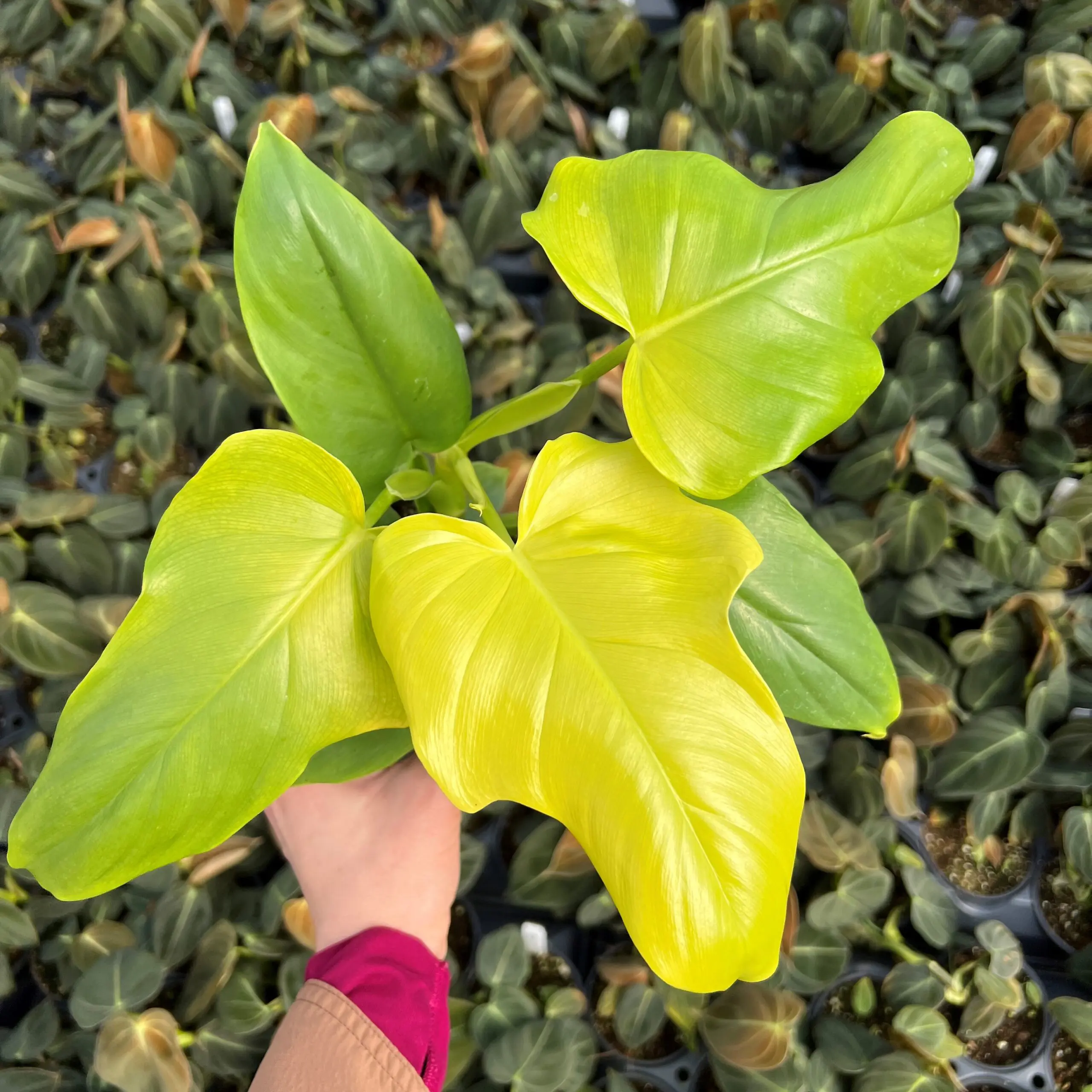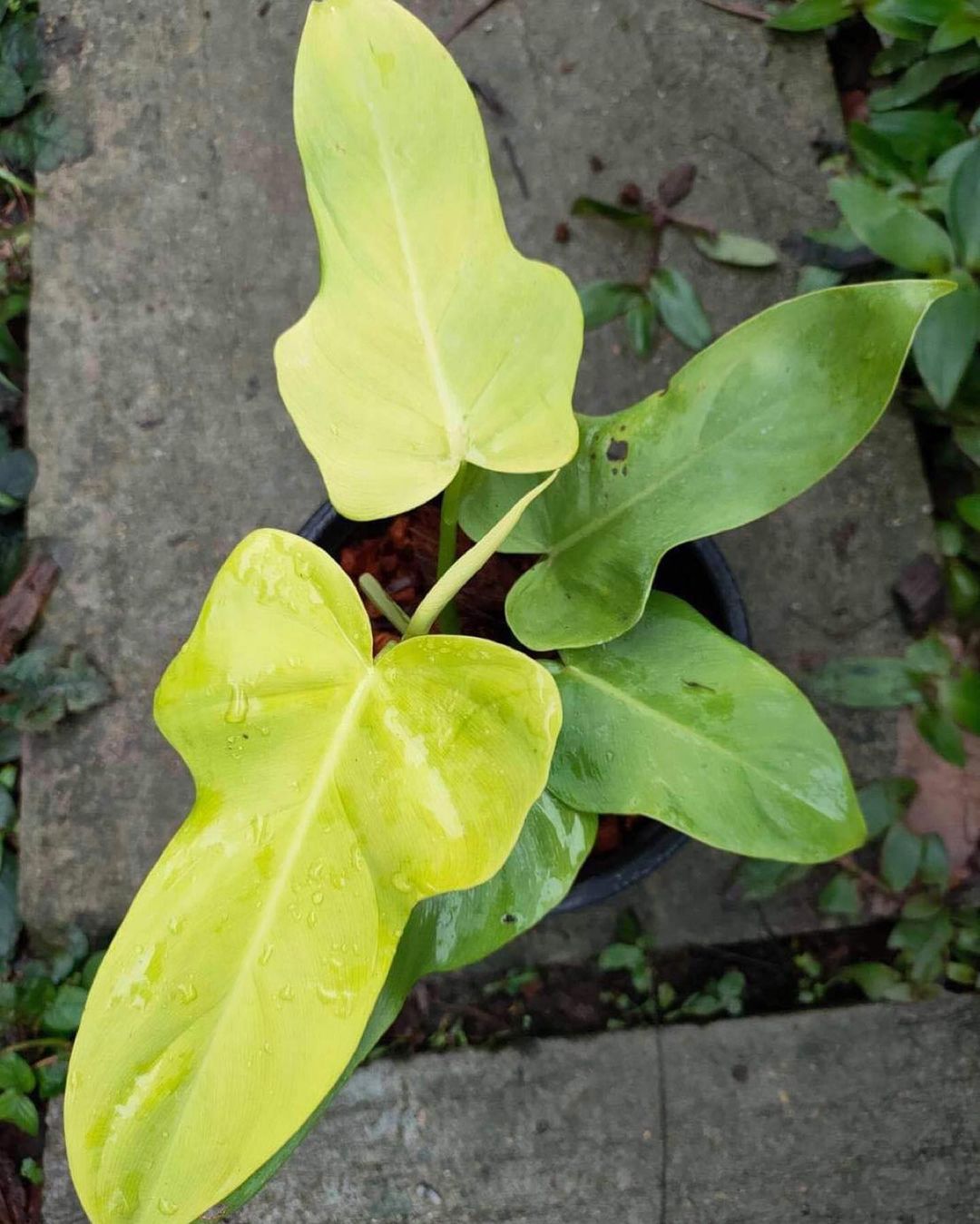The philodendron violin is a stunning tropical plant known for its heart-shaped leaves that resemble the body of a violin. This vining philodendron is a popular houseplant thanks to its tropical look and easy care requirements. However, there are some common mistakes that are easy to make when caring for a philodendron violin, especially for beginners. Avoid these missteps and watch your philodendron violin thrive!
Overwatering
Overwatering is one of the most common mistakes made by new philodendron violin owners. While these plants like moist soil, soggy conditions can lead to root rot and other problems. Here are some tips to avoid overwatering your philodendron violin:
Water Only When Soil is Dry
- Check the top few inches of soil with your finger before watering. If it is still moist, hold off on watering for a few more days.
Allow Soil to Dry Between Waterings
- Let the soil dry out moderately between waterings. This may take 5-7 days in the summer and 7-10 days in the winter.
Use Well-Draining Soil
- Choose a well-draining potting mix and avoid heavy, dense soils that hold onto moisture. Aim for a light, porous soil.
Check Drainage Holes
- Make sure your planter has adequate drainage holes so excess water can escape. Elevate pots off saucers to improve drainage.
Following these tips will prevent soggy soil and overwatering issues. Let your philodendron violin dry out between waterings.

Underwatering
While overwatering is common, letting your philodendron violin dry out too much can also cause issues. Here are some signs of underwatering and tips to remedy it:
Signs of Underwatering
- Wilting or drooping leaves that don’t perk up after watering
- Brown crispy leaf edges
- Slow growth
- Dull, lifeless looking foliage
Water Thoroughly When Dry
- When you do water, water deeply until it runs from the drainage holes. This encourages deeper roots.
Humidity Helps
- Mist leaves or use a pebble tray to boost humidity between waterings. Higher humidity helps leaves stay hydrated.
Pay Attention to Leaves
- Watch for any signs of underwater stress like wilting. Water promptly if you see any issues.
Keeping soil consistently moist will prevent underwatering. But take care not to overwater either. Finding the right balance takes some practice.

“Add a touch of elegance to your home with the Philodendron Violin. Get yours now and bring the beauty of its unique, violin-shaped leaves into your space!”
Neglecting Humidity Needs
Philodendron violins thrive in humid conditions. Dry indoor air can stress this tropical plant. Here are some common humidity mistakes and how to avoid them:
Low Humidity Symptoms
- Brown leaf tips
- Curled or crispy leaves
- Slow growth
Boost Humidity Levels
- Place plant near a humidifier
- Mist leaves daily or place on a pebble tray
- Grow in bathroom or kitchen for more moisture
Increase Air Circulation
- Stagnant air increases susceptibility to pests and diseases. Use fans to keep air moving.
Group Houseplants Together
- Help create a microclimate of higher humidity by grouping plants together.
Providing 40-50% humidity will keep your philodendron violin healthy. Consider investing in a humidity monitor to better understand your indoor air.
Choosing the Wrong Lighting
Philodendron violins need bright, indirect light to mimic their tropical jungle habitat. Here are some common lighting mistakes to avoid:
Too Little Light
- Leggy growth
- Small leaves
- Infrequent flowering
- Dull color
Too Much Direct Sunlight
- Leaf scorching
- Yellowed leaves
- Bleached coloring
- Wilting or drooping
Optimizing Light Levels
- Place in bright indirect light near a south or west facing window. Use sheer curtains to filter direct sun.
- Rotate plant periodically so all sides get light exposure.
- Move to brighter location if showing signs of insufficient light.
- Supplement with a grow light if indoor light is low.
Pay attention to how your plant responds and adjust light levels accordingly. Light is fuel for photosynthesis!

Forgetting to Fertilize
Philodendron violins are fast growing tropicals with a steady fertilizer requirement. Here are some common fertilizing mistakes:
Signs of Nutrient Deficiency
- Smaller leaves
- Slow growth
- Light green foliage
- Yellowing lower leaves
Fertilizing Best Practices
- Use a balanced liquid houseplant fertilizer diluted to half strength.
- Fertilize every 2-4 weeks during the growing season from spring to fall.
- Cease fertilizing in winter when growth slows.
- Flush soil monthly to prevent salt buildup.
Adequate fertilizing keeps philodendron violins lush and vigorous. But take care not to over-fertilize and burn delicate roots.
Repotting Too Soon
Philodendron violins are slow growers and only need repotting every 2-3 years. Here are some common repotting mistakes:
Signs It’s Time to Repot
- Roots growing out the drainage holes
- Plant is top heavy or tippy
- Growth has slowed down
- Lower leaves are yellowing
Best Practices for Repotting
- Move up just one pot size, not too big. Avoid overpotting.
- Use a well-draining aroid mix amended with perlite or orchid bark.
- Untangle bound roots before repotting. Trim any diseased roots.
- Repot in spring before growing season.
Only repot when truly necessary, as philodendron violins dislike having their root systems disturbed too often. Patience prevents problems!
Conclusion
Caring for the stunning philodendron violin does take some practice, but following good cultivation practices will keep your plant healthy. Avoid overwatering, provide ample humidity, give bright indirect light, fertilize regularly, and only repot when essential. Pay close attention to your plant’s needs and make adjustments as required. With the proper care, your philodendron violin will reward you with showstopping heart-shaped leaves in a deep green with delicate white markings along the veins. This vining stunner makes a fabulous addition to any tropical plant collection!

